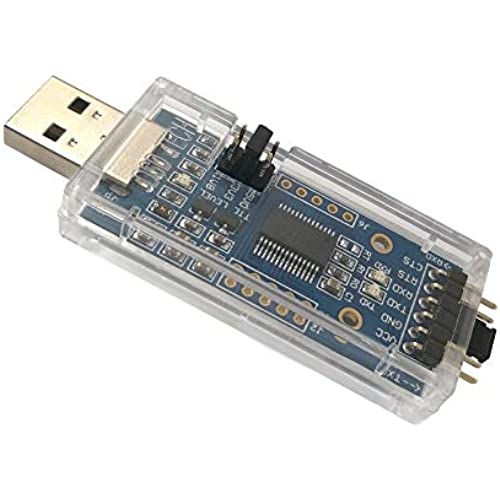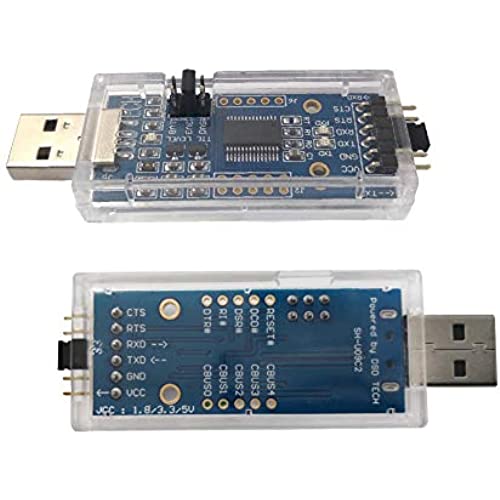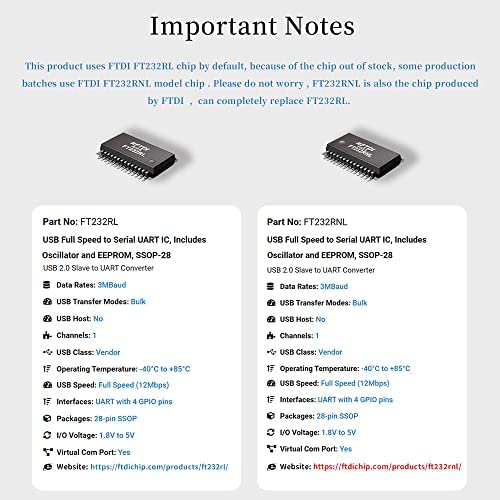











DSD TECH SH-U09C2 USB to TTL Adapter Built-in FTDI FT232RL IC for Debugging and Programming
-

G. McGarity
Greater than one weekSometimes I run into issues where certain adapters just wont communicate properly with a chip Im trying to program. So I ordered this one to attempt to fix an issue I was having programming another chip and this one worked the first time beautifully.
-

Samuel T Wilson
> 3 dayAt first it didnt recognize the port I used to plug it in. I solved it by moving to another port. Once I got that corrected, it worked as advertised.
-

Payton Michaels
Greater than one weekThis flat didn’t work at all. It was a complete waste of time and money!
-

RemcoW
> 3 dayI like that it has straps for various voltage levels. It has a clear case with clearly indicated signal lines - very nice. That will come in useful. If you just plug this thing in, it will not do anything. I use other FTDI devices (including some in our designs) and they just work by plugging them in. This one requires their driver, which is fine. After installing the driver, it wants a reset - unusual but ok. I wasnt ready to reset because I was in the middle of an edit and build so wanted to wait until later. The installation then proceeded the system to crash hard, with a blue screen and all the scary trimmings. It basically reset itself in a very rude way. That really irked me. I wasnt ready to reset and to see a blue screen seconds after installation is very disconcerting. After the PC came back up, the device worked. A bit clunky but does work. Save your work and install this thing when youre ready to reset. The price is right.
-

Larry Shockley
> 3 dayWorked perfectly for writing Tasmota firmware to my Sonoff switches.
-

Thomas J. Coyle III
> 3 dayWorks as expected and meets my USB to serial UART needs.
-

iBats
> 3 dayUsed it to program esp8285 that I have extracted from no-name smart outlet, now it serves better purpose as remote speaker controller.
-

D Frate
> 3 dayWorks as expected. Decent documentation.
-

Ferne Paucek
> 3 dayWorks great, very well made For those of you looking to program an arduino with this you MUST have a bootloader installed first to use this as a programmer
-

AC
> 3 dayI’m still learning but this has been an asset when needed. Would buy it again.
